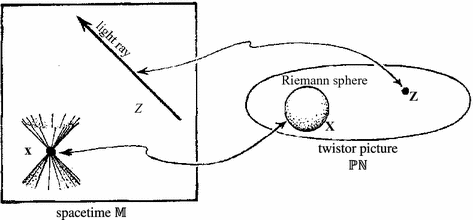Another topic I hope to write about extensively is that of New York City, including discussing the wide range of cultural events going on, as well as the amazing restaurants. On the subject of food, I should give a plug for my friend Nathan Myhrvold’s new book Modernist Cuisine. It’s been getting rave reviews, and the first printing has sold out. I’ve been promised a copy from the second printing, and Nathan tells me that, “while it’s not a coffee-table book, you could use it as a coffee table…” I’ll report once the book arrives.
I’ve been in and out of New York City since the earliest times I can remember, which were in a suburb 25 miles north. My mother was born here and my father came here by himself as a 17-year old after the war. The place has changed quite a bit over the years, and some of the changes of the past few years are quite remarkable. These days, most of Manhattan is filled with new or renovated architecture, everything fixed up to a high level of gloss, and virtually crime-free. With one bedroom apartments going for a million dollars in many neighborhoods, if you trip on your shoelace you’re likely to take down a couple millionaires. These people are not going to mug you, and any outsiders who might think of this are deterred by the intense police presence, especially since 9/11. The only exception is bicycle theft, which is rampant, and doesn’t much interest the police. Last summer I came out of a store on Broadway mid Sunday afternoon to find a group of guys with bolt cutters freeing my bicycle from its chains. No one seemed to find their activities unusual or worth doing anything about.
Back in the 1980s there was a lot of talk of “gentrification”, as poor people were displaced by well-educated young middle-class people. These days a new word is needed to describe what is going on, perhaps “plutocracification”. Someone who lives in Tribeca described to me how 20 years ago the neighborhood changed as lawyers and doctors moved in, and artists moved out. Nowadays, the lawyers and doctors are getting pushed out as the hedge-funders and investment bankers arrive. It’s hard to overstate the effect of the financial industry in Manhattan, where supposedly it provides half the personal income, with much of the rest of the economy based on catering to this new wealth. Bank branches are everywhere, often taking up four corners of an intersection, with long swathes of expensive commercial street frontage devoted to cubicles for not very well-paid bank employees, most of which are normally empty.
In late 2008, there was a blip there for a moment, and I even saw one bank branch get closed. That didn’t last long though: apartments are selling again at high prices, new bank branches are opening, and you can’t get a reservation at a long list of popular expensive restaurants. Midtown streets are impassible, filled with fleets of massive black SUVs, their bullet-proof windows tinted dark. Used to be that the rich favored limos, but no longer. No one knows how long this will last, but the city is partying like it’s 2011. Huge cuts to the budgets for schools and the city university system have just been announced, but most Manhattanites are unconcerned, since they would never have their children educated in public institutions.
One side effect of having a lot of rich people from many different countries is that the restaurants in Manhattan tend to be spectacularly good. Some are trendy and rather expensive, but for not a ridiculous amount of money you can get a fantastic meal, and you have to go out of your way to find a bad one. I’ll be writing extensively about some of my culinary obsessions, one of which is barbecue. At this point I might argue that New York has better barbecue than just about anywhere else in the world. Just down the street from here (108th and Broadway), Rack and Soul has some of the best ribs I’ve ever eaten. On 26th St., Hill Country has taken the best sausage and brisket available in Texas (Kreutz’s in Lockhart), stolen it and brought it here to the city. Over in Williamsburg, you can get great barbecue with the best pork and beans I’ve ever seen at Fette Sau. The list goes on and on….
Recently opened near here just off 125th St. is Marcus Samuelson’s Red Rooster Harlem, where I recently had a wonderful lunch. Getting a dinner reservation is not easy, and some days the restaurant is packed with the power elite. Last week Obama took over the place for a $31,000/head dinner with his friends from the hedge funds. Here’s the menu. This is a typical story of the new New York. In what used to be pretty much a slum, now there’s a beautiful restaurant with some of the world’s best food. The wealthy may sometimes monopolize it, but if you’re a New Yorker and play your cards right, you too can participate in the fun and get a fantastic meal in a gorgeous place, at a not unreasonable price.



